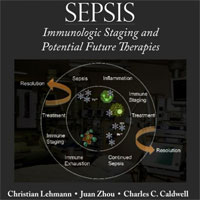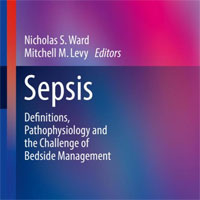Tag: coronavirus
Thrombosis vs. Hemorrhage Rates in Patients with Severe Respiratory Failure Due to COVID-19
Significant rates of pulmonary thromboembolism and of catheter-associated deep vein thrombosis were seen in both viral infections but were greater in those requiring the use of extracorporeal membrane oxygenation in coronavirus... read more
Single-use Endoscopy
Endoscopy is used in a variety of medical specialties ranging from gastroenterology to urology, cardiology and critical care. Traditionally, health systems have invested in reusable endoscopy equipment, but an industrywide... read more
Distinct antibody responses to SARS-CoV-2 in children and adults across the COVID-19 clinical spectrum
Clinical manifestations of COVID-19 caused by the new coronavirus SARS-CoV-2 are associated with age. Adults develop respiratory symptoms, which can progress to acute respiratory distress syndrome (ARDS) in the most severe... read more
REGN monoclonal antibodies work in selected hospitalised COVID-19 patients
New findings suggest a significant benefit from REGN in terms of the primary outcome of mortality for patients who have low levels of their own antibodies at the time of admission. This was an unexpected result for me... read more
Percutaneous Dilational Tracheostomy for COVID-19 Patients Requiring Mechanical Ventilation
Patients with COVID-19 who survive the early days of MV experience severe and prolonged respiratory failure. An early modified percutaneous dilational tracheostomy (PDT) was safe for patients and healthcare providers and... read more
Virtual Handover of Patients in the PICU During the COVID-19 Crisis
Video-conferencing applications for online handovers could supplement traditional face-to-face intensive care unit patient handover during outbreaks of infectious diseases. The use of video streaming and more emphasis on... read more
RIG-1 Agonist Shows Potent Antiviral Efficacy Against COVID-19
As SARS-CoV-2 continues to cause morbidity and mortality around the world, there is an urgent need for the development of effective medical countermeasures. Here, we assessed the antiviral capacity of a minimal RIG-I... read more
Imatinib in COVID-19: Hope and Caution
Despite the undoubted progress achieved with the first vaccines against SARS-CoV-2 infection, the COVID-19 pandemic continues to affect thousands of people across the globe, particularly in those countries where vaccination... read more
Breath-holding as a Novel Approach to COVID-19 Risk Stratification
Despite considerable progress, it remains unclear why some patients admitted for COVID-19 develop adverse outcomes while others recover spontaneously. Clues may lie with the predisposition to hypoxemia or unexpected absence... read more
Do Not Attempt CPR Decisions in People Admitted with Suspected COVID-19
Early do not attempt cardiopulmonary resuscitation (DNACPR) decisions were associated with recognised predictors of adverse outcome, and were inversely associated with Asian ethnicity. Most people with an early DNACPR decision... read more
Reducing the Global Sepsis Burden: A Positive Legacy for the COVID-19 Pandemic?
ESICM, SCCM, and the GSA published a consensus paper in Intensive Care Medicine, emphasising the importance of recognising that patients critically ill with COVID-19 have viral sepsis, despite some differences from sepsis... read more
Evolving Changes in Mortality of Critically Ill with COVID-19 Over 8 Months
Age and mortality rates have declined over the first 8 months of the pandemic. The use of non-invasive respiratory support (NIRS) as the first respiratory support measure was associated with survival, but causal inference... read more
OSHA releases new standard to protect front-line health workers from COVID-19
The Biden administration issued a long-awaited new workplace standard aimed at protecting front-line healthcare workers from contracting COVID-19. The emergency temporary standard, released Thursday by the Occupational... read more
A Systematic Review of the Incidence and Outcomes of In-Hospital Cardiac Arrests in Patients with COVID-19
Approximately, one in 20 patients hospitalized with coronavirus disease 2019 received resuscitation for an in-hospital cardiac arrest. Hospital survival after in-hospital cardiac arrest within the ICU was higher than non-ICU... read more
Therapeutic vs. Prophylactic Anticoagulation for COVID-19 Patients with Elevated D-dimer Concentration
In patients hospitalised with COVID-19 and elevated D-dimer concentration, in-hospital therapeutic anticoagulation with rivaroxaban or enoxaparin followed by rivaroxaban to day 30 did not improve clinical outcomes and increased... read more
Health Systems Successfully Leverage Tele-ICU During Pandemic and Intend to Continue
Help during the pandemic for overwhelmed, overworked intensive care unit (ICU) nurses at some health systems came in the form of experienced tele-ICU nurses working remotely to support on-site colleagues as they cared for... read more
Protecting The Injured RV in COVID-19 ARDS
The abnormal interaction between the right ventricle (RV) and pulmonary vasculature in various disease states is associated with adverse clinical outcomes. Impaired RV physiology in acute respiratory distress syndrome (ARDS)... read more
Non-invasive Respiratory Support and P-SILI in COVID-19
Coronavirus disease 2019 (COVID-19) pneumonia is associated with hypoxemic respiratory failure, ranging from mild to severe. Due to the worldwide shortage of intensive care unit beds, a relatively high number of patients... read more
Tocilizumab Use May Be Associated with a Short-term Mortality Benefit
For hospitalized COVID-19 patients, there is some evidence that tocilizumab use may be associated with a short-term mortality benefit, but further high-quality data are required. Its benefits may also lie in reducing the... read more
Why and How to Open ICU to Family Visits During the Pandemic
Since the lockdown because of the pandemic, family members have been prohibited from visiting their loved ones in hospital. While it is clearly complicated to implement protocols for the admission of family members, we believe... read more
COVID-19 Pathophysiology: Looking Beyond Acute Disease
Careful descriptions of the clinical features of acute disease in patients infected with the novel coronavirus SARS-CoV-2 had begun to emerge before WHO declared the outbreak of COVID-19 a public health emergency of international... read more
COVID-19 ARDS has higher EVLWi and PVPI values than non-COVID-19 ARDS
Compared to acute respiratory distress syndrome (ARDS) patients without COVID-19, patients with COVID-19 had similar lung mechanics, but higher extravascular lung water index (EVLWi) and pulmonary vascular permeability index... read more









